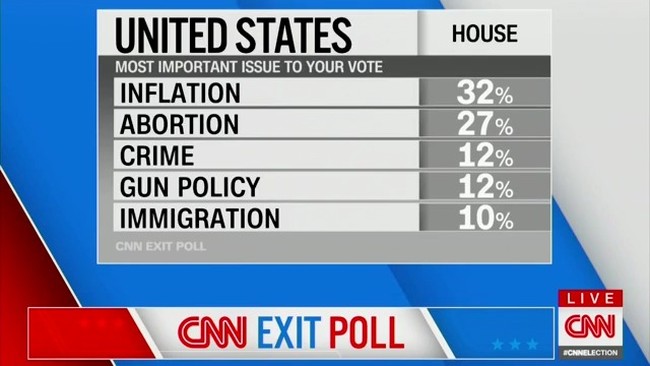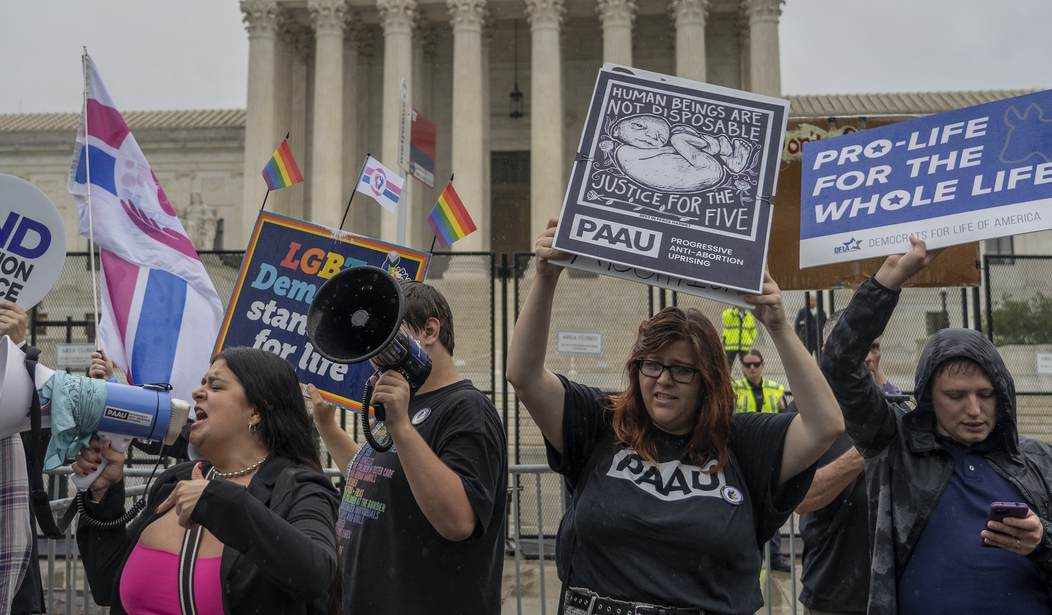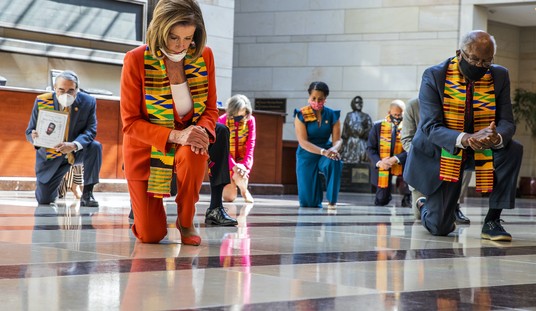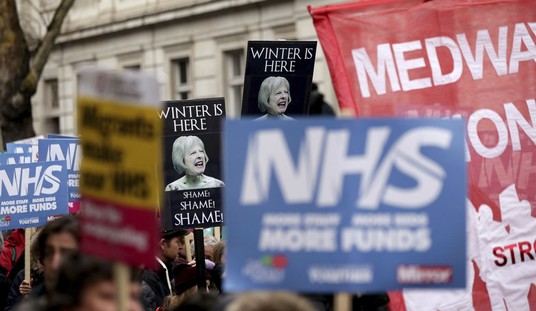The old adage success has a thousand fathers will get some ironic play in this post-midterm assessment. Republicans may well end up achieving their goal of capturing majorities in both chambers of Congress, but the amplitude of the presumed “red wave” hardly met expectations.
So what happened? Lots of fingers have been pointed at Donald Trump, and clearly his candidates largely underperformed. However, the New York Times reports that Democrats give themselves credit for their messaging strategy on abortion — an issue that allowed Democrats to paint Republicans as dangerous right-wing extremists. They also used ballot measures on abortion to goose turnout, a strategy that succeeded in making their point more relevant:
In the first major election since the Supreme Court overturned the case that ensured a federal right to an abortion for nearly half a century, abortion rights broke through, lifting Democrats to victory in Virginia, Minnesota, Michigan and New Mexico.
Voters in three states — California, Vermont and highly contested Michigan — decided to protect abortion rights in their state constitutions. In a fourth, Kentucky, a conservative bastion and home to Mitch McConnell, the Republican leader in the Senate, voters rejected an amendment saying their constitution gave no right to an abortion.
For decades, abortion politics worked a certain way, rallying the Republican base and abortion opponents with far more intensity than abortion rights supporters. Conservative evangelicals and Catholics often voted on abortion, or the future of the Supreme Court, even if it meant compromising other priorities.
But overturning Roe v. Wade appears to have flipped the script. In the months since the June decision, Democrats seized on the issue, linking abortion to everyday family economics and health care and tapping into voters’ fears about the rise of far-right Republicans. They wove the issue into broader Democratic messages that framed the election as a referendum on what they describe as Republicans’ “extreme” views, and not on President Biden and Democratic control in Washington.
For those with long memories, Republicans have used this same strategy in the past. During the Bush 43 years, the GOP used ballot referenda on cultural issues (mainly traditional marriage) as a means to boost base turnout. It usually helped cover for less-than-spectacular candidate slates, but it wasn’t 100% successful in winning elections. Democrats’ efforts to use ballot measures to make the issue more acute to voters follows that tradition.
But did it work? Democrats aren’t the only people pointing to abortion as the difference between a red wave and an incremental-at-best win. Pro-life groups point the fingers at Republicans for their flabby non-response to the issue, with some exceptions, and argue that the GOP conceded the fight unnecessarily. Axios lays out the claims from SBA List, one of the largest pro-life groups in the US:
Driving the news: Susan B. Anthony Pro-Life America, a large anti-abortion organization with close ties to GOP leaders, slammed Republican candidates who distanced themselves from abortion bans and failed to clearly communicate their stance on the issue, calling it “political malpractice.”
The group said in a memo that to “win in competitive races,” candidates needed to focus on defining their opponents as “abortion extremists” and “contrast that with a clearly defined pro-life position centered around consensus such as pain-capable or heartbeat limits.”
State of play: They specifically praised Florida Sen. Marco Rubio and Gov. Ron DeSantis, Texas Gov. Greg Abbott, Sen.-elect J.D. Vance of Ohio, and Georgia Senate hopeful Herschel Walker, whose closely watched race is headed for a runoff. …
Republicans are typically outspoken on abortion, particularly during the primaries. However, they went quiet following the Supreme Court’s Dobbs decision and the Kansas abortion referendum, even as talking points from major GOP committees recommended the opposite.
Republican leadership — including Senate Minority Leader Mitch McConnell (R-Ky.) — largely ducked the issue, except to emphasize that decisions about the procedure rest with the states.
Republicans may have fumbled this in both directions. In the immediate aftermath of the Dobbs decision, Republicans in Congress started discussing a federal-level ban on all abortions despite urgent calls to let the matter settle until after the midterms. That position fell almost as outside the mainstream in America as abortion-on-demand until birth — the extreme position of Democrats cited by SBA List. When that began to backfire, Republicans fell back on federalism rather than engage directly on the issue, just as SBA List suggests.
Most Republicans thought that abortion simply wouldn’t resonate in a political environment with inflation at 40-year highs, crime at generational highs (at least in urban areas), and a president as deeply unpopular as Joe Biden. And that was a rational calculation too, but it turned out to be wrong. The first inkling that Republicans might face disappointment came in the first release of the early exit polls, which showed abortion the second-highest priority for Election Day voters:

More than twice as many voters who turned out on Election Day prioritized abortion than crime. The GOP had gone heavy on crime in the last weeks of the midterm cycle, spending even more on that than on inflation messaging in the closing weeks. That stunning result indicated that Election Day turnout was both more Democrat and more inclined to stay with their party than may otherwise have been the case.
In other words, Republicans miscalculated how much impact the chaos and uncertainty around the end of Roe would create and how much it would drive voter turnout. Rather than come up with a consistent and well-financed message that spoke to the center and allayed those concerns, the GOP’s first impulse was to push for a radical change at the federal level, and then to not talk about it at all. Democrats, who are better connected to the voters impacted most by the chaos of the abrupt change in the abortion landscape, capitalized on it — and may have blunted or even neutralized the GOP’s momentum in the suburbs.
Was that the reason for the midterm red wave getting reduced down to a ripple? Probably not; candidate quality, Trump fatigue, and media headwinds all played a role too. But those exit polls show that this was definitely a significant factor, and reminds us once again that voters have a peculiar way of deciding what their priorities are in any cycle. If political parties and candidates don’t perform the due diligence necessary to learn and respond to those effectively, these kinds of stunning disappointments are what they get.
Now that the midterms are over, we must prepare for the all-important 2024 presidential cycle — in fact, even more urgently than before. We need to make sure Democrats are one and done in the White House, and keep them locked out of control of Congress too. If you want real in-depth analysis and exclusive content and wish to support the long-term mission, join HotAir VIP today and use promo code VIPWEEK to receive 45% off your membership!








Join the conversation as a VIP Member